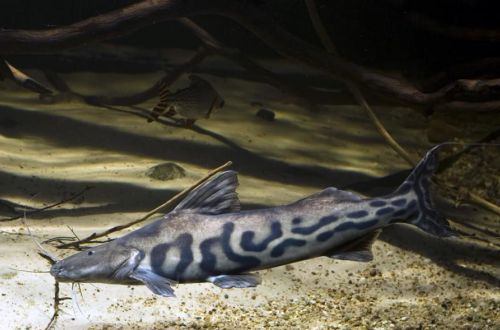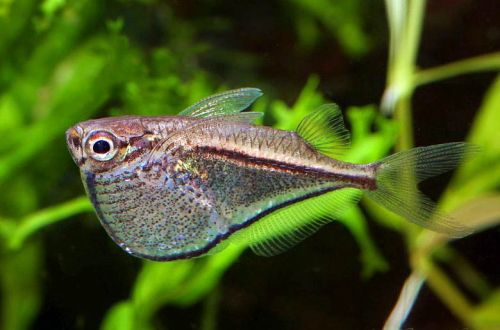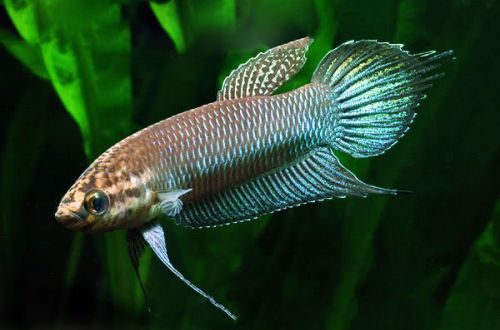
Zebra catfish
Brachyplatistoma striped or Golden zebra catfish, scientific name Brachyplatystoma juruense, belongs to the family Pimelodidae (Pimelod or flathead catfish). A large carnivorous fish from the depths of the Amazonian waters, which is rarely seen in the hobby aquarium.

Contents
Habitat
It originates from South America, is found everywhere in the Amazon and Orinoco river basins in Brazil, Colombia, and Venezuela. It lives in the main channels of rivers at a depth in the bottom layer, in both rapid and slow currents.
Brief information:
- The volume of the aquarium – from 1000 liters.
- Temperature – 22-27°C
- Value pH — 6.5–7.5
- Water hardness – 1–12 dGH
- Substrate type – any
- Lighting – subdued
- Brackish water – no
- Water movement – light or moderate
- The size of the fish is about 60 cm.
- Food – products from fish, shrimp, mussels, etc.
- Temperament – conditionally peaceful
- Content alone or in a group
Description
Adults reach a length of at least 60 cm. The catfish has a flattened head and a large mouth. The eyes are small and do not play a big role, since at the bottom in muddy waters the illumination is very low. In search of prey, fish rely on long sensitive whiskers – the main organ of touch. The tail is relatively small, but has very long extreme rays, which have turned into filamentous processes, sometimes exceeding the length of the body.
The coloration is pale yellow or gray, pinkish in young individuals. The pattern consists of wide dark vertical, oblique or branching stripes, sometimes broken into spots.
Food
Carnivorous species, in nature feeds on other benthic inhabitants. In an artificial environment, it easily adapts to alternative products such as shrimp, mussels, squid, white fish meat pieces. Large individuals require only one meal per week.
Maintenance and care, arrangement of the aquarium
Golden zebra catfish are only suitable for very large private or public aquariums. They are extremely rare in the hobby aquarium hobby. Few people can afford to install a tank weighing more than one and a half tons (the weight of water with soil and decoration) at home or in an apartment.
Although this is an unpretentious fish that can adapt to various conditions (meaning the hydrochemical composition of water), it cannot be called easy to keep. Maintaining high water quality at an acceptable level and regularly cleaning a large aquarium requires a lot of time and money.
Behavior and Compatibility
A peaceful calm fish, but on occasion it will definitely eat anyone who fits in its mouth. Joint keeping is allowed only with large non-aggressive species that live in the middle or upper layers of the water.
Breeding / breeding
At the time of writing, there have been no successful breeding cases of Brachyplatistoma striata in captivity. In the natural environment, the reproductive cycle is directly related to seasonal migrations.
Fish diseases
Being in favorable conditions is rarely accompanied by a deterioration in the health of fish. The occurrence of a particular disease will indicate problems in the content: dirty water, poor quality food, injuries, etc. As a rule, eliminating the cause leads to recovery, however, sometimes you will have to take medication. Read more about symptoms and treatments in the Aquarium Fish Diseases section.





